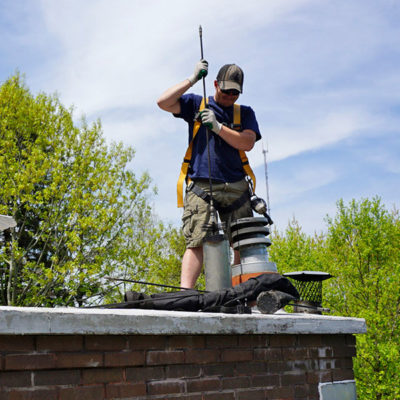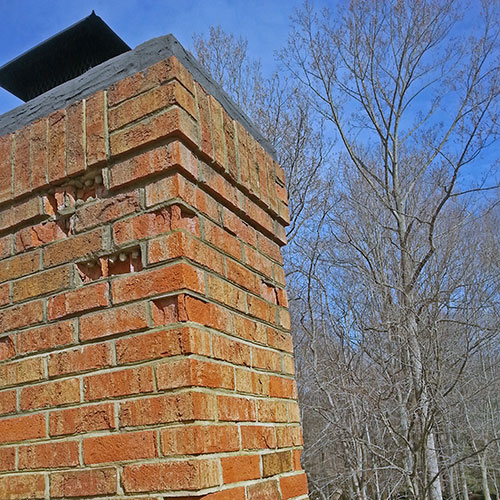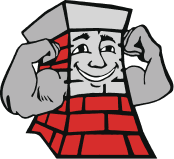Common Chimney Dangers and How to Prevent Them
A chimney in disrepair is not just unsightly, it’s dangerous. Many of the chimney hazards we witness on a daily basis can be prevented, as the old saying goes, “An ounce of prevention is worth a pound of cure.” Here are some common problems that can become hazards if not properly addressed.
Blocked Chimneys
 The purpose of a chimney is to draw smoke and toxic gases up and out of a home. If the flue becomes blocked by animal nests, residue from smoke (called creosote), broken masonry, dead animals, etc. The smoke and toxic fumes have nowhere to go except back into your home. This can lead to carbon monoxide poisoning. Carbon monoxide is an invisible and odorless gas so you won’t notice it until it is too late. Symptoms of carbon monoxide poisoning are confusion, headaches, difficulty breathing, nausea, loss of consciousness and even death.
The purpose of a chimney is to draw smoke and toxic gases up and out of a home. If the flue becomes blocked by animal nests, residue from smoke (called creosote), broken masonry, dead animals, etc. The smoke and toxic fumes have nowhere to go except back into your home. This can lead to carbon monoxide poisoning. Carbon monoxide is an invisible and odorless gas so you won’t notice it until it is too late. Symptoms of carbon monoxide poisoning are confusion, headaches, difficulty breathing, nausea, loss of consciousness and even death.
Chimney fires can also occur once the debris inside the flue catches on fire. These fires are dangerous because they can damage the internal structure of the chimney causing it to fail. Never start a fire if you suspect your chimney is blocked. Schedule a professional chimney sweep immediately.
**Prevention – Make sure that your chimney cap is in good condition. Chimney caps prevent birds, squirrels and other animals from entering the chimney and creating nests, they also lessen the amount of leaves and other items that might otherwise blow into a chimney during a storm. Use clean-burning wood that forms less Creosote to avoid less buildup. If you notice broken or crumbling brickwork, attend to it immediately.
Chimney Water Damage
Water Damage can occur through the constant cycle of freezing and thawing or because of leaks in the chimney flue or crown. These leaks spell trouble often rusting the damper or firebox. It can cause damage to the chimney liner which may cause water to seep into ceilings or walls. Excess moisture is the perfect environment for mold which can cause foul odors and inhibit air quality.
**Prevention – A good chimney cap is your first line of defense against excess water. They are also known as rain covers and will help guard your flue against water damage. Make sure the flashing is in good condition. The flashing is the seal between the roof and chimney. Ask your chimney sweep about waterproofing.
Cracked Brickwork
 Masonry can become cracked for a variety of reasons. The first is the changing weather, over time the brickwork will begin to crack and even crumble due to the cycle of freezing and thawing. Heavy winds and water damage can lead to large cracks.
Masonry can become cracked for a variety of reasons. The first is the changing weather, over time the brickwork will begin to crack and even crumble due to the cycle of freezing and thawing. Heavy winds and water damage can lead to large cracks.
**Prevention – once again a strong well functioning chimney cap is going to do a lot to prevent the water damage that causes cracked brickwork. Catching cracks when they are small because of thorough inspections is the key to preventing costly issues down the road.
Damaged Fireplace Flue Liner
Chimney liners extend the life of your chimney by protecting the flue from heat and corrosion. The liner can become damaged due to cracks from foundation settling, weather and deterioration from the effects of oil and gas.
**Prevention – have your chimney liner inspected and cleaned at least once a year to catch problems before they start.
These dangers are definitely preventable, they all start with a routine chimney Inspection or cleaning performed by a professional. Our qualified chimney sweeps can help you get to the bottom of your issue before it’s too late.


